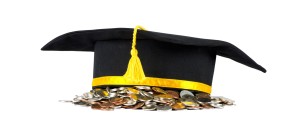
Navigating Student Loan Default
by Andrew Kreighbaum
A study finds that most borrowers exit loan default within a few years. But many still fail to make serious progress paying down their balances, and the options facing them are inconsistent and confusing.
Defaulting on student debt is typically considered the worst potential outcome for student borrowers struggling to make payments on their loans.
But in spite of new payment options offered by the Education Department, more than a million borrowers go into default each year. And little is known about what happens to those borrowers after they default.
A new study from the American Enterprise Institute released Monday examines the complex maze of options that face borrowers once they default and finds no standard route for borrowers looking to exit and get their loan payments back on track. And it finds that while default has many negative implications for borrowers, it’s not the end of the road for borrowers — seven out of 10 exit default or pay their loans off within five years.
But the path borrowers choose to exit that status can have a huge impact on their total cost and repayment timeline.
Jason Delisle, a resident fellow at AEI and one of the paper’s co-authors, said the paper throws into question the value of loan defaults as a measure of borrowers’ ability or inability to repay their loans.
“Default is really a status,” he said. “We talk about it like it means something about someone and their financial situation, earning situation and their debt situation. I’m really skeptical that it’s a good proxy for those things.”
A student borrower defaults on their loan when they go more than 270 days without making a payment on time. At that point, the debt is turned over to a private collection agency for recovery and borrowers face a hit to their credit score, among other negative financial implications.
Within a handful of years, though, borrowers see several different outcomes. About a quarter stay in default and see their balance increase; about a fifth get on track to pay off their loans without having exited; another quarter of borrowers exit default but see their balances increase thanks to interest or additional borrowing; and the rest leave default and reduce their outstanding balance.
Those varying outcomes suggest that a borrower’s default status may say little about their actual ability pay back their loans. Meanwhile, the option a borrower chooses to exit that status can have major financial consequences and create perverse incentives for borrowers. Making a lump-sum payment, for example, would come with a 24 percent collection fee. Loan rehabilitation — where borrowers put a loan back into good standing with a certain number of on-time payments — on the other hand would mean only a $9 collection fee and renewed access to federal borrowing.
“The worst thing you could do right now is write a check and pay it off,” Delisle said of a defaulted loan. “Because you’re going to be charged the highest fees and the default’s going to stay on your credit score.”
Delisle and the report’s co-authors recommend standardizing fees for the various borrower options and removing a default from a borrower’s credit score as soon as they complete any resolution option.
The AEI study is one of two new papers released Monday examining both sides of default — how borrowers arrive at that outcome and how they get out. A report from Kristin Blagg, a research associate in the Education Policy Program at the Urban Institute, examines data from national credit bureaus and finds that a borrower’s credit score is an indicator of whether a borrower is likely to default, as is having certain kinds of collections debt, including retail, utilities or medical debt.
Loan default is typically associated with the negative impact it has on borrowers’ credit scores. Blagg’s findings show that borrowers see a credit score drop in the years immediately preceding a loan default.
“It’s an indication that borrowers who default are under a certain amount of financial distress,” she said.
Meanwhile, borrowers who hold auto, mortgage or credit card debt — which requires underwriting — are associated with a lower likelihood of default. Blagg said the findings, combined with other established factors for default, could point toward a set of borrowers that should get more intervention.
“It should be relatively difficult to default on student loans. There’s some evidence that assistance isn’t getting to these borrowers,” she said.
The papers build on existing research on defaults that has emerged in recent years. Studies have shown that borrowers who attend for-profit institutions and those who never complete a degree are generally more likely to default on their loans, as are students from low-income families.
More recent research has showed how defaults fit within racial disparities in student loan debt. Judith Scott Clayton, associate professor of economics and education at Teachers College, Columbia University, found in a 2016 paper that black borrowers default on their loans at three times the rate of white borrowers. And last year an analysis from the Center for American Progress found that almost a quarter of black borrowers who completed an undergraduate degree default, compared to 9 percent of borrowers across the board.
Colleen Campbell, the associate director for postsecondary education at CAP, said the number of resolution options for default creates an additional barrier for low-income students who are least able to navigate the financial aid system to begin with.
“We have to understand the equity implications for the system we present to borrowers,” she said. “I don’t think the system was designed for folks with poor credit histories and who are on public benefits. I don’t think we designed the system for low-income folks, but it’s differentially affecting low-income folks in higher ed.”
